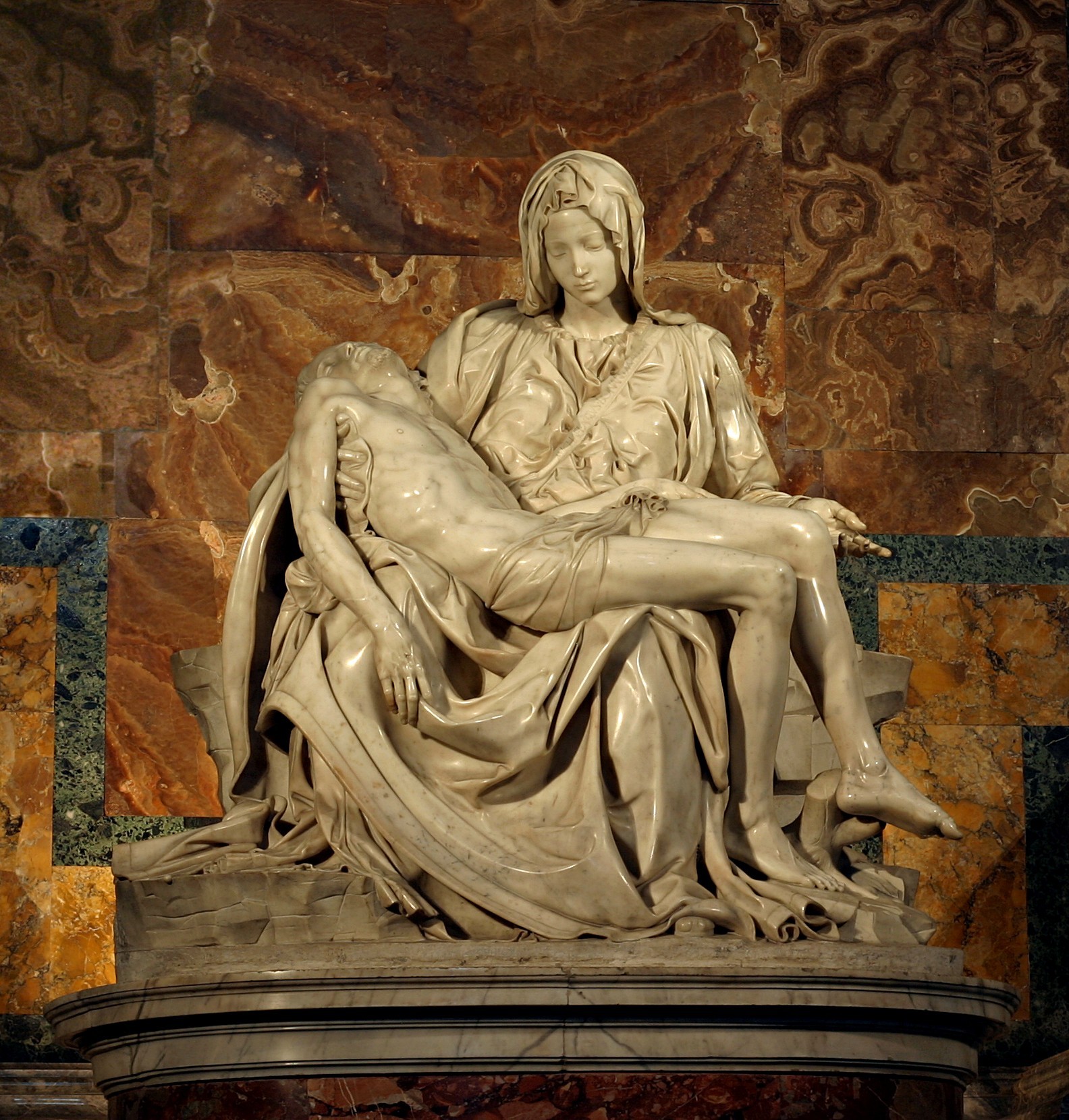“This child is destined to cause the falling and rising of many in Israel, and to be a sign that will be spoken against, so that the thoughts of many hearts will be revealed. And a sword will pierce your own soul too.” Luke 2:34-35
In Michelangelo's Pieta, we see Mary holding in her arms the broken, limp form of her son and savior. The image of a mother, who had been told so many years earlier that a sword would pierce her heart, cradling her son is powerful. My first, inescapable thought as I studied a photo of the sculpture, was that I could not bear to endure watching my son bear what Jesus bore.
The story isn't about a grieving mother, though. And so I wanted to shout to Mary and to everyone around her who mourned the death of Jesus that this isn't how His story ends.
We who have the benefit of time know the glorious next chapter. We know that Jesus was laid in the tomb. We know the tomb could not hold him. We know he rose again, bringing salvation to all who would believe in him. We know that in drinking the bitter cup of death, Jesus shattered the cup of death reserved for each of us.
As I gazed at Michelangelo's lifeless Christ, I felt it unjust that his mother, friends, and disciples grieved. I wanted to let Mary in on the secret, that her son and savior was not resting in her arms. He was actively engaged in destroying Death once for all. He was very much alive indeed. Only waiting. Waiting to return in glory and send his followers out to proclaim his awesome triumph over the bitterness of sin and death.
I also felt it unjust that we do not take the time to grieve with those who walked with Jesus in the flesh. In a way, it is right, for we do know how it all turned out. We should rejoice. But I don't know... I think we would also do well to feel a bit of the loss and grief of his mother and friends. Jesus didn't just casually walk to Calvary, jump up on the cross, and watch the world go by till he got tired and decided to go ahead and do away with Death. It was a monumental, earth-shaking and heaven-opening event. And it wasn't easy. It wasn't something we should just gloss over on our way to the resurrection.
I'm not suggesting we minimize the resurrection by dwelling on the morbid details of the crucifixion. I just think we should take the time to wade a little deeper into the depths of what Christ did for us, to know and feel His sacrifice on a heart level, not just as an intellectual precursor to a happy Easter morning.
Going back to the bitter cup theme, a picture formed in my mind as I gazed upon Michelangelo's Pieta. Bear with me, please, if it sounds stupid or irreverent...
I pictured Jesus, standing outside of his body - the body resting in Mary's arms - drinking the bitter cup of death. The cup is squarish, red on the outside and black on the inside, just like the coffee cups that make me so happy each morning (and afternoon). In one fluid motion, he takes his last gulp, tipping the cup way back to get every last drop, then moves the cup from his mouth. As the cup breaks contact with his lips, it shatters. It shatters to smithereens, and then to a fine dust that blows away into nothingness. All because Christ picked up that bitter cup, and Death couldn't bear His holiness.
And now, praise God, there is no cup. "There is now no condemnation for all who are in Christ," Christ, who was broken for a time, that Death might be shattered for all time. “Death has been swallowed up in victory,” and nothing will ever be the same again.

No comments:
Post a Comment